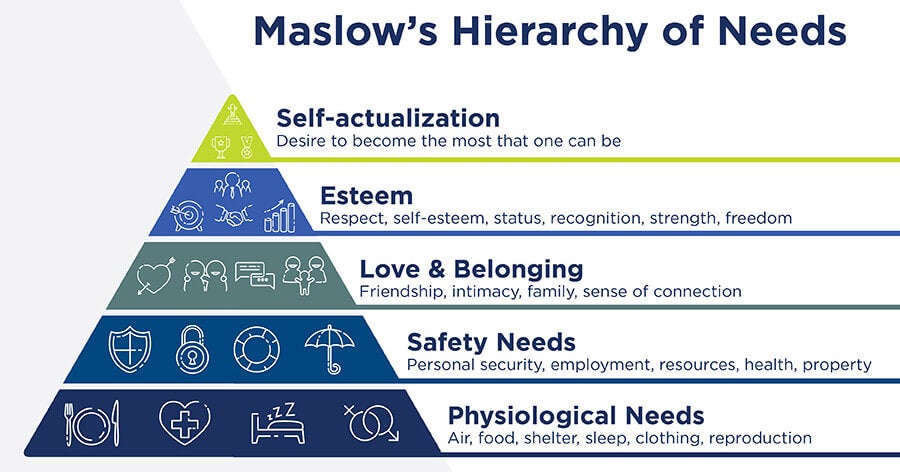February 14, 2024


In an increasingly competitive hiring market, offering a competitive salary isn't enough to attract top talent anymore. Of course, pay plays a role in whether a worker accepts and remains at a new position, but your organization's brand and reputation have a powerful influence as well.
82% of employees place a high value on working for a person-first organization, where they are valued as a whole person, not just an employee.
While fair, competitive pay indicates your appreciation for a job well done, it does little to address the mental and emotional impact that the workplace has on employees. Successful organizations understand that appreciation - provided through recognition and rewards - creates a company culture where employees feel valued and respected.
Ultimately, people want to be paid well and treated well.
Let's dive into the role that employee recognition and compensation play in the workplace.
The Biggest Difference Between Compensation and Recognition
To understand the difference between employee recognition and compensation, think back to your Psychology 101 class and Maslow's Hierarchy of Needs.


For individuals to access the more complex aspects of this hierarchy, their basic needs must be met first.
Compensation Meets an Employee's Basic Needs
Competitive compensation that keeps up with inflation and the COL in your area ensures that employees can meet the physiological and safety needs of themselves and their families.
You may have an incredible employee recognition program in place, but if you're not providing at least a livable wage, your recognition program will do little to incentivize performance and boost morale.
Money Does Buy Happiness
For years it was believed that money and happiness correlated to a threshold of $75,000 (which would be around $108,000 adjusted to current inflation). A 2010 study asserted that someone who earns $75,000 is relatively as happy as someone earning $350,000.
However, this study was recently debunked by research from the University of Pennsylvania. Newer research reveals that increased income is closely connected to increased life satisfaction.
In a time of economic uncertainty, many families are just a few paychecks away from homelessness. A competitive salary can provide a stronger cushion when things go wrong and ensure basic needs are met with more than the bare minimum, i.e., buying nutritious food, receiving adequate medical care including preventative measures, etc.
RELATED: UAW Strike 2023: What Happened and What Other Companies Can Learn From It
Compensation Goes Far Beyond Base Pay
These days, competitive compensation involves more than salary. It typically includes an investment in an employee's future. Employees are looking for organizations that offer a variety of incentives in their compensation package, including:


Competitive Base Pay
Use industry reports and salary surveys to determine what a competitive salary is for each role. Experience, regional costs of talent, and employee skills can all impact your salary offering. If you interview highly-engaged candidates, but few choose to accept the position, it may be a sign that your current offer is below market standard.
Continuing Education Stipends
This may include professional development opportunities, online classes, and training related to an employee's role.
Tuition reimbursement programs have a high ROI in the workplace. An employee who feels like they're provided ample opportunities to learn is 3.5 times more likely to be engaged, and 94% of employees choose to stay longer at companies that invest in their education.
Life Insurance
45% of employees consider life insurance one of the most valued benefits a workplace can provide. Many organizations offer completely company-sponsored life insurance, while some occasionally require additional premiums from employees.
Medical Benefits
91% of people work for a company that offers health benefits to at least some of its workers; however, only 81% are eligible. Some people may not be able to use the health insurance provided by their employer due to their work status or inability to pay premiums.
At an average cost of $15,013 per employee, a comprehensive health insurance package may be costly for employers, but it can cost just as much to slash benefits. 67% of employees name employer-covered healthcare as the most important benefit a company can offer.
You can often lower the costs associated with your medical benefits by encouraging employees to engage in preventative health services through a corporate wellness program. Schedule annual health screenings in the workplace, address behavioral health needs early on, and incentivize participation in wellness competitions.
Additional Compensation
Various organizations may choose to offer different forms of compensation, such as:
- stocks and bonds
- profit sharing
- required and/or unlimited paid time off
- dental and/or vision coverage
- company retreats
For some people, flexible work arrangements save valuable time and gas, effectively functioning as another form of compensation. This doesn't just involve remote work. Flexibility may also mean offering a compressed workweek or allowing employees to adjust their work hours throughout the week.


You may even choose to have new hires work with your benefits administration in order to design a compensation package that fits their specific needs.
An annual rewards statement can be used to outline the total value of benefits that employees are provided. Many factors go into the total compensation package of each employee, and this statement emphasizes your investment in employee satisfaction.
Remember, each employee is an appreciating asset, not an expense. The money you invest in curating an experienced, knowledgeable team will be multiplied tenfold by the value and loyalty they bring to your organization.
Employee Appreciation Addresses Deeper Needs
While money is a critical component of employee satisfaction, paying employees well isn't enough to ensure employees feel like valued members of your organization.
Employee recognition is necessary to help employees meet the higher levels of Maslow's Hierarchy of Needs: love and belonging, esteem, and self-actualization.
Love and Belonging
30% of employees have felt invisible in the workplace, and 27% say they have been ignored. Two types of employee recognition help combat this feeling and establish a sense of connection within your company.
Top-down recognition, provided by managers and other people in leadership, reminds employees that their exceptional performance is noticed and appreciated. 28% of employees say that their most memorable recognition came from their manager, 24% say it came from a high-level executive or the CEO, and 12% from their manager's manager.
While employee recognition from leadership creates a sense of belonging, it's just one component of a robust recognition system. Peer-to-peer recognition also ensures that employees feel appreciated. In fact, 65% of employees would remain at a job with unappreciative managers if people on their team recognized their hard work.
Team members don't just want a pat on the back from their coach, they also want the appreciation of their fellow players.


Esteem
Anyone who has received praise from a colleague or manager knows the immediate boost it provides to your self-esteem. Recognizing hard work and success leads to intrinsic motivation that can help motivate employees and improve their sense of self-worth.
Self-actualization
Consistent recognition encourages employees to pursue achievement and become the best that they can be. Self-actualization fuels personal growth. With time, recognition can develop an average hire into top talent.
Happy Employees Are Good for Business
When all of an employee's needs are met - including their physical, physiological, and mental health needs - they are better equipped and motivated to perform at a higher level. A competitive salary and thriving employee recognition program can lead to:

Higher Job Satisfaction and Increased Employee Retention
The cost to replace a single employee is typically one-half to two times their annual compensation and the process to find and train a replacement is a drain on resources. When employees feel valued, they're likely to remain at their current workplace.
In addition, a company that emphasizes employee recognition is more likely to attract top talent. 56% of HR professionals agree that employee recognition helps recruit talented employees, and 68% agree that it aids in retaining employees.
One study found that employees who were recognized at least four times a year had a 96% retention rate.
A company where people like the culture and experience high job satisfaction will be better able to retain employees long-term, instead of experiencing the emotional and literal costs associated with with high rates of attrition.
Increased Employee Engagement
When employees anticipate that they'll receive recognition from leaders in the organization, they are 2.7 times more likely to be highly engaged.
37% of workers would be spurred toward higher employee performance if they received more appreciation for their work, and companies with a formal employee recognition program in place see a 14% boost in employee engagement and productivity.
In 2023, 51% of currently employed people were actively or passively looking for a new job, but the rate is much higher for actively disengaged employees: 61% compared to just 43% of engaged employees.
Employee engagement sounds great in theory, but what does it look like in practice? Ultimately, that's up to your discretion, but most HR leaders agree on a few common characteristics of engaged employees:
- They bring positivity to your organization.
- They function as a strong member of a team.
- They are reliable and responsible.
- They go beyond the bare minimum to exceed expectations.
- They care about the success of your company.
A higher level of employee engagement typically means that it takes more money for an employee to consider leaving. Engaged employees would want at least a 31% pay raise in order to consider taking a new job. Employees who are not engaged or actively disengaged would require just a 22% pay increase.


Stronger Employee Morale
A work culture that emphasizes employee recognition has a strong positive impact on the attitude that employees bring into the workplace each day.
The end result? Better morale improves productivity and profitability. People who feel like they are their efforts are valued will perform at higher levels. 40% of Americans would give more energy to their work if they received more frequent recognition.
Recognition Opportunities by Industry
It's widely expected for compensation to vary based on your line of work, but research shows that workplace industry should also play a role in the recognition and appreciation you provide to employees.
Research from Gallup and Workhuman has determined what meaningful recognition looks like in a variety of industries.
- Technology companies can use peer recognition to strengthen the bond between team members, especially because many employees work in a remote capacity.
- Many manufacturing organizations lack an employee recognition program in general. Implementing a program will go a long way in improving employee satisfaction and retention.
- Retail organizations can benefit from an employee recognition platform that celebrates life events such as birthdays, weddings, and personal milestones and achievements.
- Employee motivation skyrockets in healthcare and social services organizations when the company values the effort of each team or group.
- Most companies in the finance and insurance industries would benefit from providing more frequent employee recognition.

Effective Employee Recognition Programs Involve More Than Money
Cash is king-- but not when it comes to your employee recognition program.
Once a cash bonus hits an employee's bank account, it becomes entwined with their standard salary, used to buy the week's groceries or splurge on a costly necessity. While this financial recognition can be helpful and welcomed, it's not always noteworthy.
When employees are asked what type of recognition has been most memorable, money is just one of several ways to reward employees for a job well done. Other forms of recognition that make employees feel noticed include:
- public employee recognition and appreciation
- private recognition from managers, colleagues, or customers
- earning a high level of achievement
- a promotion or increase in responsibilities
How to Shape a Recognition Program That Makes Employees Feel Appreciated
Thanks to the Great Resignation and a push for higher expectations of employers, most companies provide some form of employee recognition.
The way that leaders recognize employees, however, can vary widely, even in the same industry or same-sized organization. Some companies choose to throw cash at desired behaviors, rewarding their top salespeople with hefty bonuses. In another workplace it may be standard to recognize high performance with a quick email or verbal thank you.
However, according to Gallup, employee appreciation is most meaningful when it is fulfilling, authentic, personalized, equitable, and embedded in the company culture. Thoughtfully designed points-based incentive programs are able to meet all of these criteria.
In research performed by the Incentive Research Foundation, surveys revealed that 80% of employees feel like they are receiving a gift when they receive points from their workplace recognition programs. 75% agreed that it's memorable when they receive redeemable points.
It's argued that using points-based employee recognition programs gives employees a boost several times throughout the process: once when they receive personal recognition, again when they are rewarded their points, and yet again when they redeem their points and enjoy the material reward.
"I think we have to consider that the great thing about points is they are not as brutal as cash. You can figure out the cash value of points, but you still get a more emotional impact. In fact, you get it twice – when someone gives you the points and when you redeem them." --Incentive Research Foundation.
You Can Provide Recognition and Incentivation All In One Place
Terryberry's Be Recognized employee recognition software allows you to create an engaged, purpose-led organization through employee recognition, corporate wellness, custom awards, and analytics.
The platform is designed to facilitate social recognition from both peers and managers. As employees earn points, they can exchange them for a reward of their choosing, including material goods from thousands of top brands and custom company SWAG. We also offer custom awards and jewelry to celebrate employee milestones.
Employee recognition programs are one of the cornerstones of a healthy work environment where employee satisfaction and engagement drive success.
Are you ready to streamline the way you approach employee appreciation? Contact us to learn more or schedule a demo.


